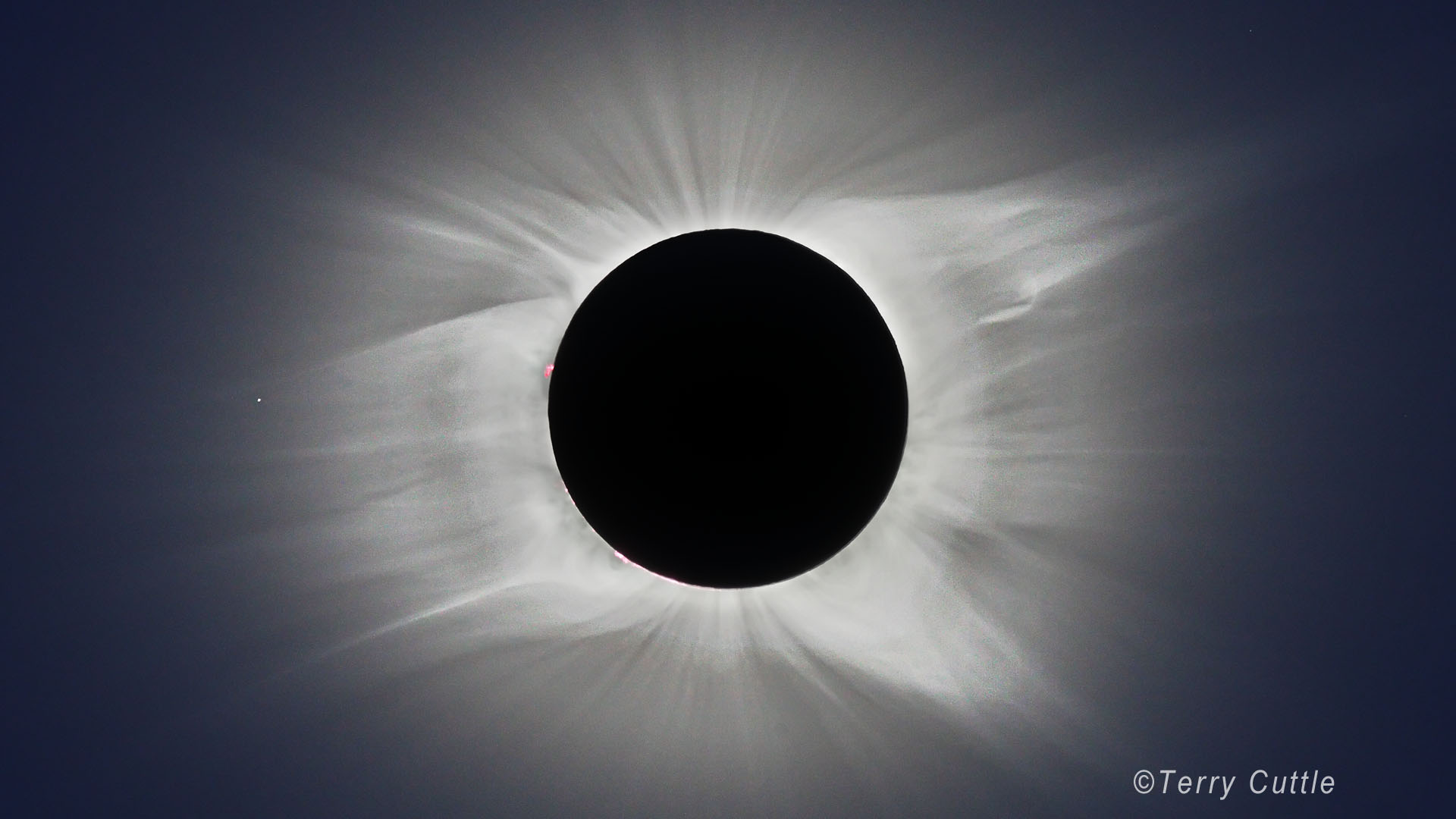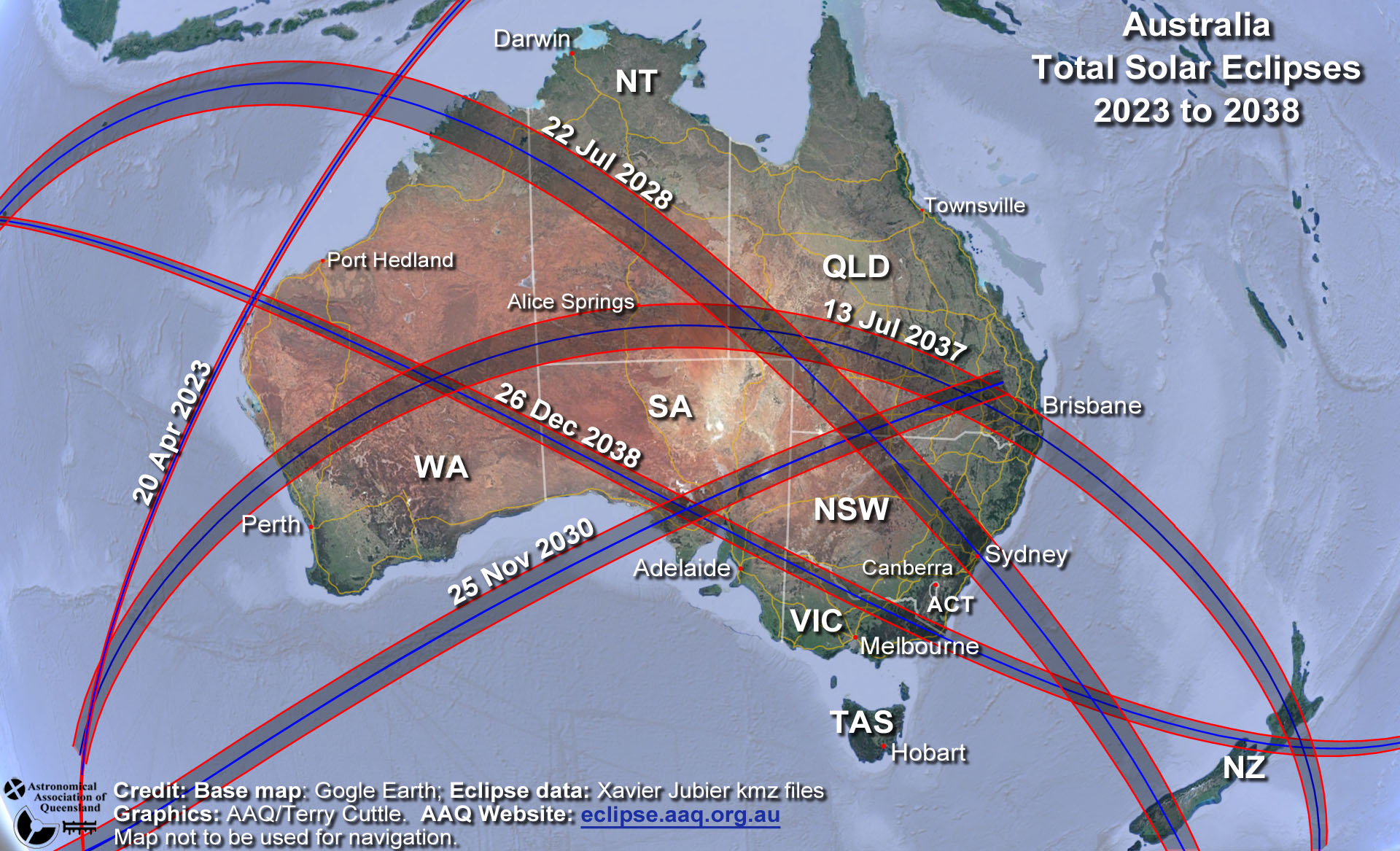AAQ Australian eclipses
Welcome to the Astronomical Association of Queensland's website on the extraordinary sequence of five total solar eclipses to occur over Australia in the period up to 2038. The Magic of Eclipses page describes the how, when, where and frequency of solar eclipses and the magical experience of being in the path of a total solar eclipse. Detailed information is provided on each of the five eclipses including which towns and cities are lucky enough to be in the path of totality, timing of the events and what to see. The important issue of how to safely observe a solar eclipse is covered in detail. Resources are included for educators including presentations on the various eclipse and eclipse related topics and there are ready made classroom activities in lesson plan format.

The magic of eclipses
A total solar eclipse is simply the most awe-inspiring, breathtaking show that nature has to offer. The Sun disappears in the daytime sky as the Sun and Moon align, suddenly turning the sky to a deep twilight.

Five Australian eclipses
Australia will experience a remarkable sequence of total solar eclipses in the coming years. Commencing in 2023 there will be five total solar eclipses crossing the Australian mainland in a period of less than 16 years.
%20and%20hand%20held%20solar%20viewer%20(right).jpg)
Eye safety
The only safe way to look directly at the partially eclipsed Sun or the Sun at any other time is through special-purpose solar filters, such as “eclipse glasses” or handheld solar viewers.

Resources
These resources have been designed to help educators provide meaningful and interesting exercises for students.
